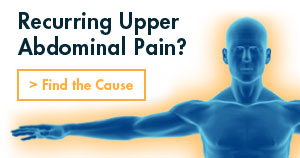Recovery from gallbladder surgery depends on the procedure performed and the type of anesthesia given. After your procedure, you will be taken to a recovery room for observation. Laparoscopic cholecystectomy is often performed on an outpatient basis, so you may be discharged from the recovery room after a few hours.
These are general post-op guidelines following gallbladder surgery. Be sure to follow the specific guidelines provided by your doctor.
Activity
You can resume most usual activities gradually beginning shortly after surgery. You should begin walking the night of surgery or the following morning and continue to increase activity, as you are able. Increased activity reduces the risk of blood clots, and improves breathing to prevent pneumonia.
Many people are capable of working from home within three to four days (or when they are off of narcotic medications). Most people return to a sedentary job within a week and a half and are cleared for full activities after four to six weeks (i.e. contact sports, police officers, firemen, etc.).
Avoid lifting more than 10 pounds for four weeks and excessive bending or twisting for one to two weeks following surgery. This is to allow healing of the incisions.
You should avoid sexual intercourse for 10-14 days or until cleared by your doctor.
Avoid driving until you no longer need narcotic pain medication. Driving while taking them can impair your ability to drive safely.
Wound Care
You will be given specific instructions unique to your care. Most incisions are covered with surgical glue or a bandage. In many cases bandages will no longer be necessary after 48 hours from surgery.
You may shower after 48 hours (after the gauze and clear tape dressing is removed). It is okay to get soap and water on the incisions. Pat the area dry. It is not recommended that you submerge underwater (in a bathtub, pool, or hot-tub) for at least two to three weeks post-op.
Medications – Pain Management
Pain is typically just around the site of incisions, but after laparoscopic surgery, you may have more general abdominal pain or even shoulder pain due to the air used to inflate your abdomen during the surgery. Pain from air inflation will go away within two to three days. Frequently, long-acting numbing medication will be utilized around the incisions thereby greatly reducing pain for the next two to three days.
You will be discharged with pain medication, typically a mild to moderate strength narcotic. Take as needed and as prescribed. You may also take over-the-counter medications, but it’s important to know that most narcotic medications prescribed are combined with Tylenol (acetaminophen) and you should not take additional Tylenol if you are taking a narcotic medication that already contains Tylenol.
Home Medications
Unless otherwise instructed, you should be able to resume your usual home medications the night of or the morning following your surgery.
Diet
You may resume your usual diet as you feel able unless otherwise instructed. You may have some abdominal bloating or mild nausea after your operation, so eat slowly and only eat what you can tolerate. Your appetite may be less than usual at first, but should return to normal within a week or two. Be sure to drink plenty of liquids (six to eight glasses of water or juice each day) if your appetite is not very good.
Follow Up
A post-operative appointment two weeks after surgery will be scheduled.
Call Your Doctor If:
- You have a fever of 101.5° F or higher.
- You have redness around your incisions.
- You have drainage from your incisions, particularly if it is thick and foul-smelling.
- You have nausea or vomiting or abdominal distention (bloating).
- Your pain gets worse or is not relieved by your prescription pain medications.
- You are not making urine as you were before your operation.
- You develop worsening swelling in your legs or have sudden shortness of breath.
- You have shortness of breath and/or chest pain.
Schedule your appointment today and talk to an expert.



 Causes & Symptoms
Causes & Symptoms

